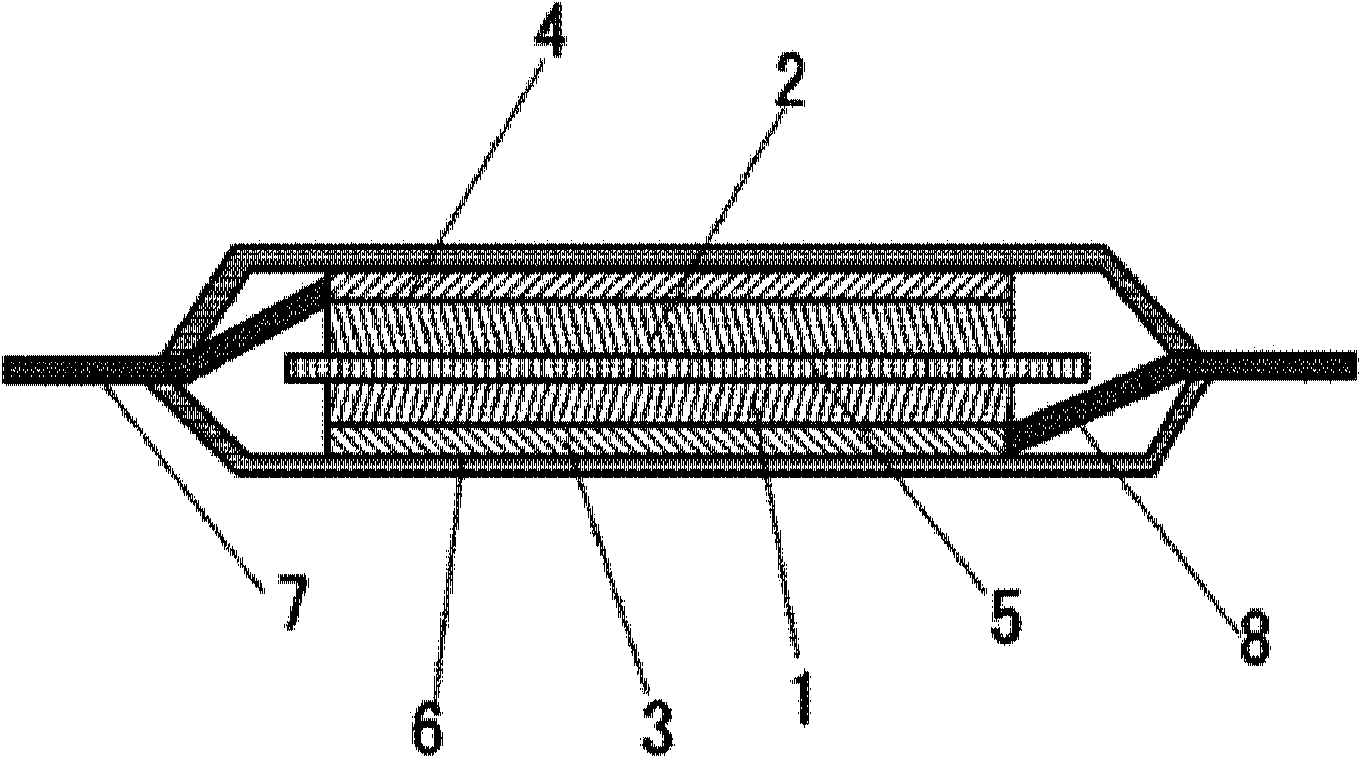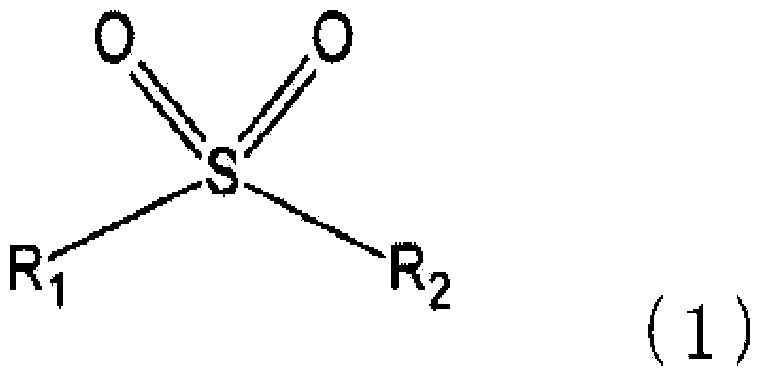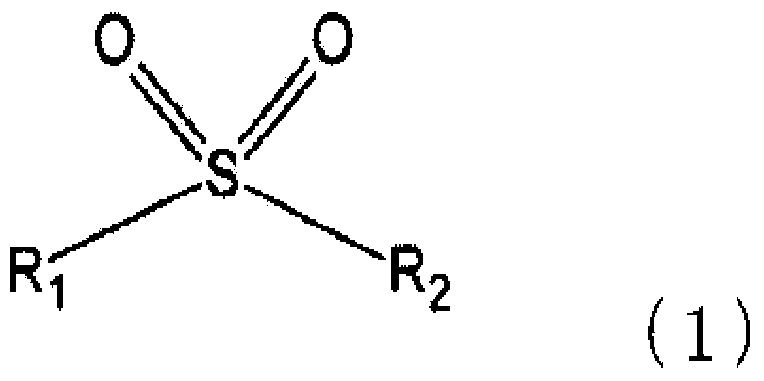Lithium secondary cell
一种二次电池、电解液的技术,应用在二次电池、锂蓄电池、电池等方向,能够解决未描述氟化溶剂与砜化合物混合的实例等问题,达到改进容量的下降、抑制气体的产生的效果
- Summary
- Abstract
- Description
- Claims
- Application Information
AI Technical Summary
Problems solved by technology
Method used
Image
Examples
Embodiment 1
[0197] (production of positive electrode)
[0198] First, weigh the MnO at the expected composition ratio 2 , NiO, Li 2 CO 3 and Ti 3 o 3 powder, crush and mix. Subsequently, the mixed powders were calcined at 750 °C for 8 h to fabricate LiNi 0.5 mn 1.37 Ti 0.13 o 4 . This positive electrode active material was confirmed to have an almost single-phase spinel structure. The manufactured cathode active material is mixed with carbon black as a conductivity-imparting agent, and the mixture is dispersed in a solution of polyvinylidene fluoride (PVDF) to thereby prepare a cathode slurry. Soluble in N-methylpyrrolidone and acts as a binder. The mass ratio of the positive electrode active material, the conductivity imparting agent and the positive electrode binder is 91 / 5 / 4. The positive electrode slurry was uniformly applied to both sides of the current collector formed of Al. Subsequently, the current collector was dried in vacuum for 12 hours and subjected to compressi...
Embodiment 2~11 and comparative example 1~3
[0206] A battery was fabricated as in Example 1 except that the composition of the solvent and additives in the electrolytic solution was set as described in Table 1. As shown in Table 1, in Examples 4 to 11, in addition to SL and FE1, one or more solvents selected from the following solvents were mixed: MMDS (methylene disulfonate), PS (1,3-propane sultone), LiFSI, TFMP (methyl 2,2,3,3-tetrafluoropropionate), FEC (monofluoroethylene carbonate), PC (propylene carbonate) and EC (ethylene carbonate). In the examples in which two or more of the carbonate compounds and / or fluorinated carboxylate in Table 1 were mixed, the numbers in parentheses indicate the volume ratios of these substances. In addition, in the case of using additives, the numbers in parentheses indicate the content (% by mass) of the additives in the electrolytic solution.
[0207] (high temperature cycle test)
[0208]The high-temperature cycle characteristics of the batteries manufactured as described above ...
Embodiment 12~40
[0217] A battery was fabricated as in Example 1 except that an electrolytic solution containing a solvent having a composition ratio of fluorinated ether / sulfone compound / carbonate compound shown in Table 2 was used. An electrolytic solution further containing the additives shown in Table 2 was used in Examples 31-40. Table 2 shows the results of the evaluation carried out in Example 1. For Examples 12 to 40, satisfactory cycle characteristics were provided even if the composition ratio and type of the fluorinated ether / sulfone compound / carbonate compound were changed. Additional addition of additives makes the cycle characteristics satisfactory. It should be noted that, in the examples in which two or more carbonate compounds in Table 2 were used, the numbers in parentheses indicate the volume ratios of these substances. In addition, in the case of using additives, the numbers in parentheses indicate the content (% by mass) of the additives in the electrolytic solution.
...
PUM
| Property | Measurement | Unit |
|---|---|---|
| specific surface area | aaaaa | aaaaa |
| specific surface area | aaaaa | aaaaa |
| specific surface area | aaaaa | aaaaa |
Abstract
Description
Claims
Application Information
 Login to View More
Login to View More - R&D
- Intellectual Property
- Life Sciences
- Materials
- Tech Scout
- Unparalleled Data Quality
- Higher Quality Content
- 60% Fewer Hallucinations
Browse by: Latest US Patents, China's latest patents, Technical Efficacy Thesaurus, Application Domain, Technology Topic, Popular Technical Reports.
© 2025 PatSnap. All rights reserved.Legal|Privacy policy|Modern Slavery Act Transparency Statement|Sitemap|About US| Contact US: help@patsnap.com



